Api Base Camp Trail ( 13 days)

For more information you can check out the link below:
A day to day itinerary is given below:
Day 1: Kathmandu – Dhangadhi
Day 2: Dhangadhi – Gokuleshwar
Next day we take a bus ride from Atariya Bus Stand to Gokuleshwor. The bus passes through Dadeldhura (3 – 4 hours) on the way which is famously known as the queen of hills. Winding through the road with amazing views of Chameliya valley, we reach Gokuleshwar where we rest for the night.
Day 3: Gokuleshwar – Paribagar (1170m)
Today we will start the walking part of our trek after 2 hours of drive to a place called Latinath (1004m). On the road we pass by the biggest hydropower station in Far-West while following the Chamelia River. Getting off at Latinath we travel lightly for about an hour to reach Paribagar which is the destination for the night.
Day 4: Paribagar (1170m) to Makarigaad (1470m)
Trail to Makarigaad is going to take us through awe-inspiring views of traditional villages, agricultural terraces and stone-roofed houses which are genuine parts of Far-Western Nepal. Mid-way (after about 2.5 hours) there is a tea-house which should not be missed as it is where we will be having lunch. The rest of the trail is walking through forested area in midst of trees like Fir, Hemlock, oak and Rhododendron. Finally, after about 5 hours of trek, we reach Makarigaad which is a small settlement. There is a large fortress here that has been in ruins since ancient times.
Day 5: Makarigaad (1470m) to Siti (2258 m)
Siti is about 8 hours away for an average trekker so we should start as early as possible. We take a steep climb up through the gorge until we reach the village of Pato (2198 m). This is where we rest and revive our spirit with a good lunch. Looking at the long road ahead, we fasten our belt and start up-hill until the last ridge after which it’s a gentle walk down to Siti.
Day 6: Siti (2258 m) to Domal (2950 m)
We start today with a downhill until the village of Khayekot (2036 m) which marks the end of sleeping in comfort of lodges or tea-houses. After a good portion of lunch in our belly at Khayekot, we walk on further down the line towards Domal. Domal is revered as holy site where the two great rivers of Chameliya and Rokap meet each other for the first time. Here, we set up our tent and lie down looking at the ceiling full of stars. An average takes around 7 hours to end their day here.
Day 7: Domal (2950m) to Dhaulo Odar (3548 m)
After fastening up our backpacks next morning, we start the day with a steep climb until we see forests and open pastures. Dhaulo Odar or Lower Api Base Camp is an open grassland with rhododendron forests on the foreground and high mountains to feast your eyes upon on the background. “Odar” in Nepali language means “Cave” which are also found in this area. It is going to take between 5-6 hours to reach the lower camp.
Day 8: Dhaulo Odar (3548 m) to Api Base Camp/ Pilkandah (3861m)
It takes 2.5 hours to climb from low camp to high camp. Api Base Camp is filled with open space completely surrounded by mountain peaks. One can have their food blessed by Mt.Api on the north side while Mt. Nampa (6929 m) and Mt. Bobaye (6808 m) towards east. We can further explore the source of Chameliya river on the outskirts of Mt. Api which you have been following since Gokuleshwor. For over-night stay we will return back to Lower camp.
Day 9: Lower Api Base Camp/ Dhaulo Odar to Siti
The return journey is downhill until we reach Khayekot. You should have your lunch here at Khayekot as there are still more than half way left to cover. From Khayekot we will have to climb a steep hill. It will take a total of around 6 hours to reach Siti.
Day 10: Siti to Makarigaad
Today’s journey will take around 6 hours to complete. On the road people will feel as if they are moving back again into civilization. You will come to the town of Pato where you can have your lunch. It will take around 6 hours to reach Makarigood.
Day 11: Makarigaad to Gokeshwar
The hike today is a small one as compared to the days that went by. You will reach Latinath in about 4 hours. From Latinath, you should take a bus to Gokuleshwar which is estimated to take around 2 hours.
Day 12: Gokuleshwar to Dhangadhi
Drive to Dhangadhi is a long one and the day is spent sitting on a chair inside a moving vehicle. But, there are amazing views to catch on the road of hills and mountains. It will take 9 hours to reach Dhangadhi.

Day 13: Dhangadhi to Kathmandu
You can take a bus back to Dhangadhi or even book a flight.
Khaptad National Park (9 days)
Khaptad National Park has to be one of the most beautiful grasslands in the Far-western Nepal. There is so much of flora, fauna, ecology and scenic beauty here which still remains to be explored. When we ask the local people about this place they tend to say “When i go to Khaptad, i am lost and i want to be lost”. The major attraction of this place is the Tribeni temple, Khaptad Baba ashram and Khaptad Daha.
For more information you can check out the link below:
http://farwestnepal.org/our-packages/the-api-base-camp-13-days/
Itinerary:
Day 1: Kathmandu to Dhangadhi
We book a bus from New Bus park in Gongabu which will cost around Rs.1000 – 1500. This price is dependent on the present context of situation in country. Discounts are available if you can show a valid student ID card. It will take around 16-18 hours to reach Dhangadhi, so sit tight.
Day 2: Dhangadhi to Siligadhi
The final destination for today is a hill city called Siligadhi. Mid-way, you can have lunch at Dadeldhura. At Siligadhi, you can visit the Saileswary temple and get a good rest overnight.
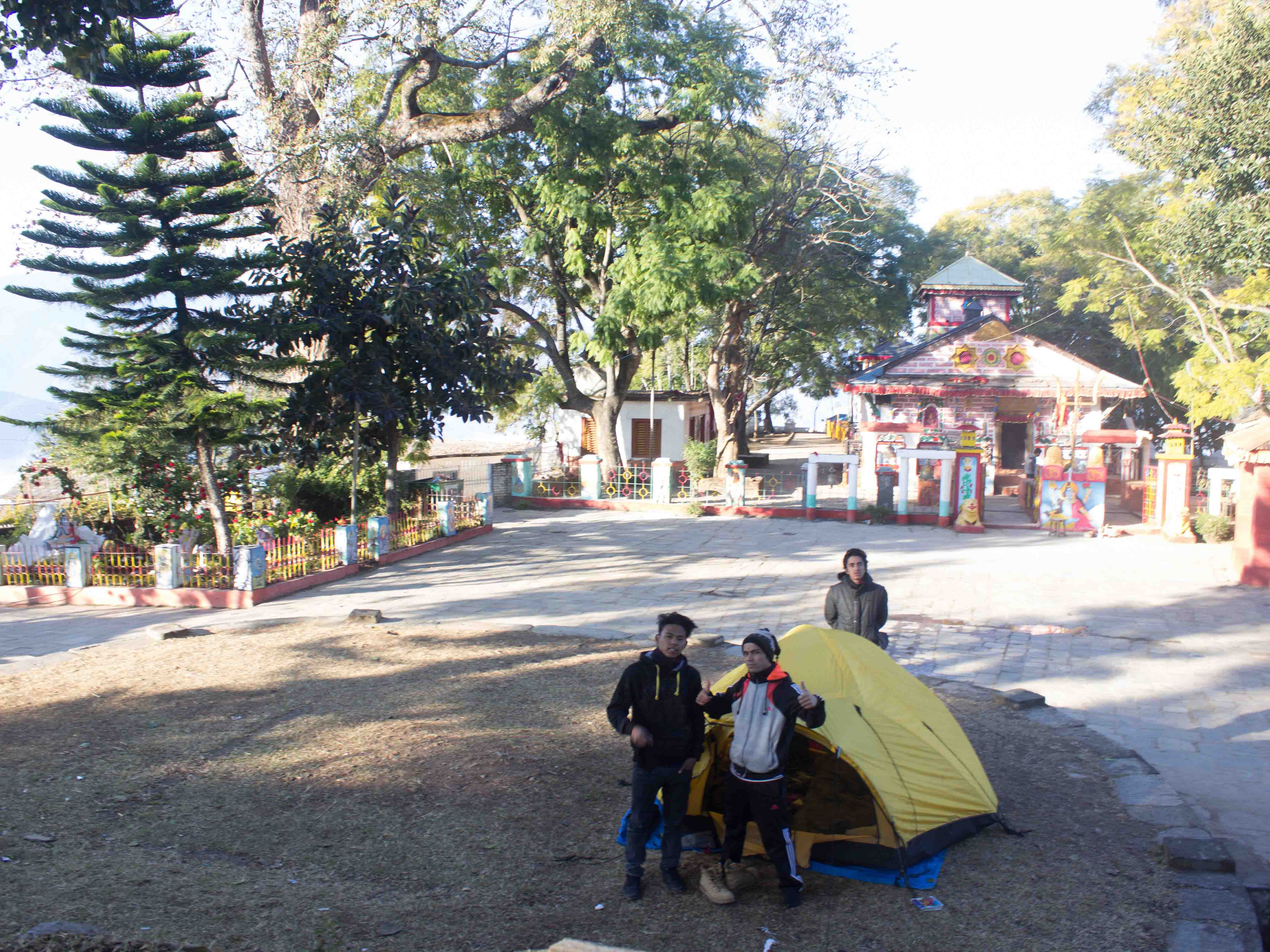
Day 3: Siligadhi to Jhigrana
You will have to walk from here up to a place called Baglekh (4 – 5 hours) where you should have a good lunch. Then, we don’t stop until our feet are resting in the village of Jhigrana about 2 hours away. One can either camp here or opt for homestay.
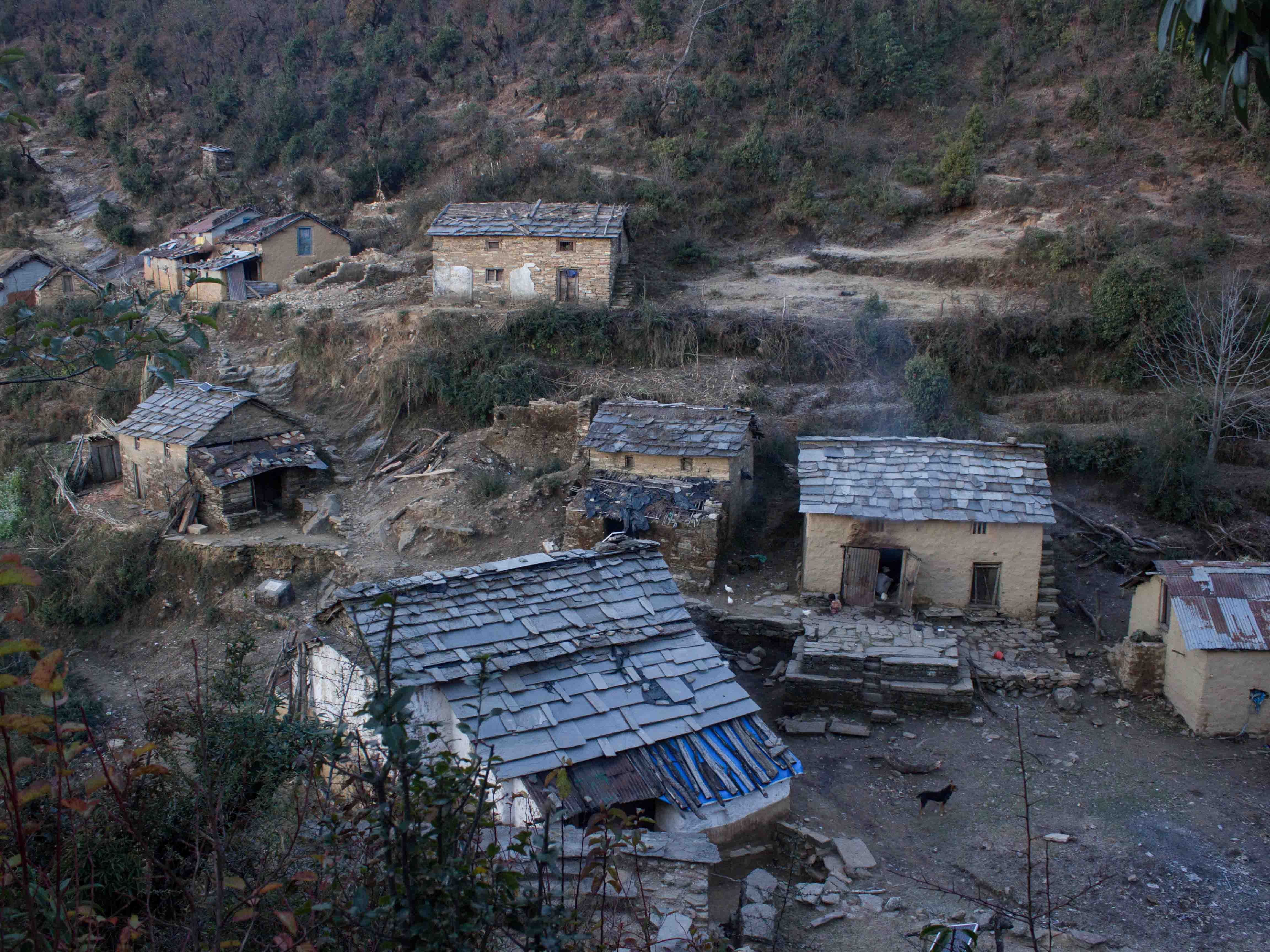
Day 4: Jhigrana (2250m) to Bichpani (3103m)
The trail to Bichpani is pretty much steep. It is better to rest and go inorder to maintain your pace. You should carry plenty of water and food on this road as there are next for zero tea-houses operating here. The trail is densely forested area constituting of Fir, Hemlock, Oak and Rhododendron. There are plenty of birds to be seen on this trail which is an added benefit if you are a bird enthusiast. You should stay at Bichpani and continue the next day on deeper towards Khaptad.
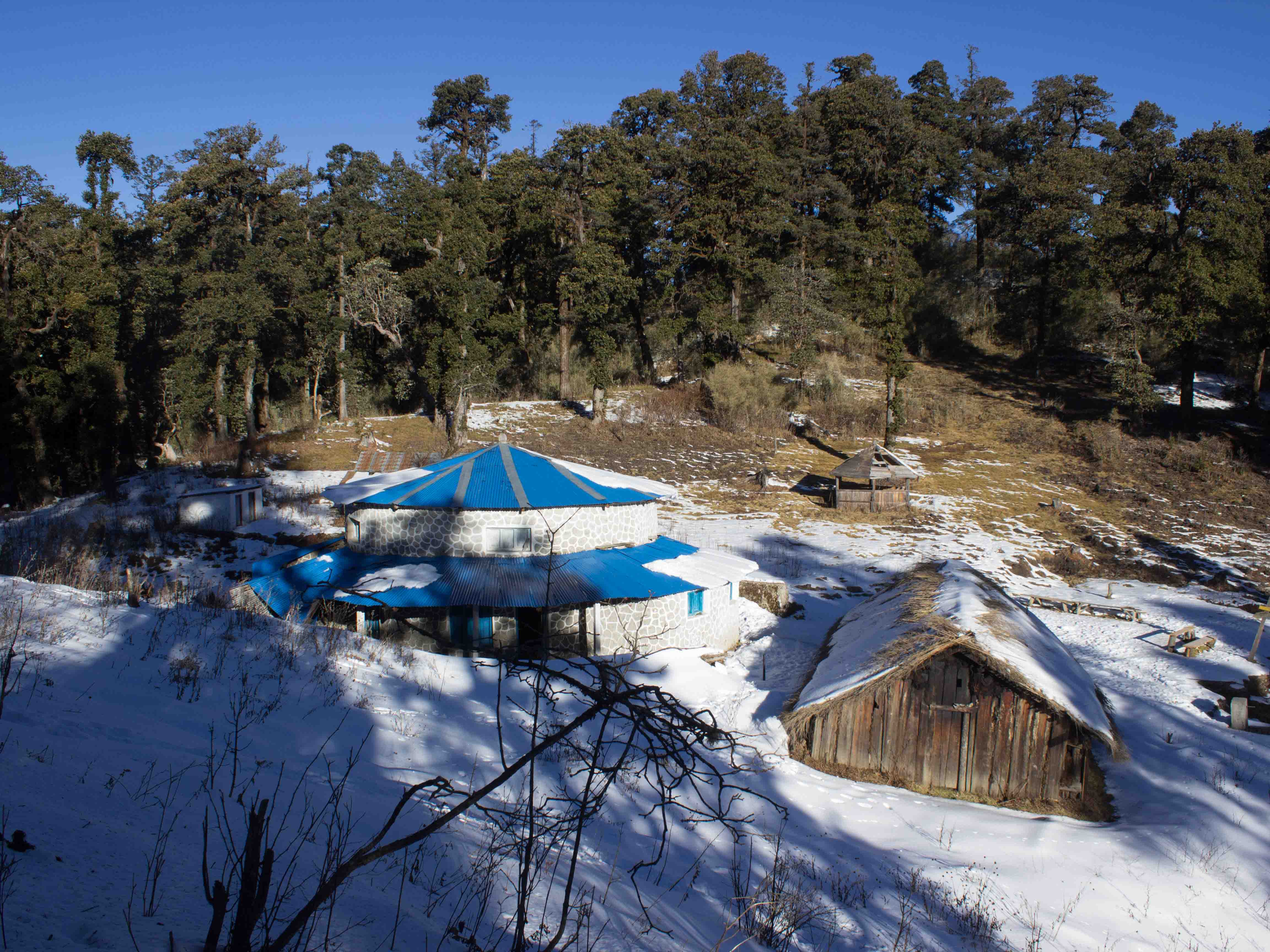
Day 5: Bichpani to Khaptad National Park
Today, we will see the true beauty of this region. After crossing Buki Dahi (about 2 hours from Bichpani), plain grasslands will reveal themselves and leave you astounded. After Buki Dahi, one can rest at Sita Paila temple and then at Tribeni temple. There are rivers flowing here where you can go for a refreshing dip if you want. By the end of the day, we reach the official center of the national park which is opposite to an army camp. There is a lodge here that will serve good food and rest run by the locals. Although, in winter season the availability of these lodges is questionable as owners regularly move down the trail if the frequency of travellers is low.

Day 6: Around Khaptad National Park
The first place one should look to visit in Khaptad National Park is the Khaptad Daha which is reachable in 1.5 hours from the lodge. Another side trips is to Khaptad Baba Ashram who is considered to have lived here in 1940’s practicing meditation and exploring herbal medicine of this region.
Day 7: Khaptad National Park (3103m) to Chainpur (1048m)
The return is a long one taking 8 hours of a day. Our mission is to reach the nearest village where transportation has reached. You will pass by villages such as Lokhoda, Meltadi, Tamil and from here it is a 20 minutes ride to Chainpur.
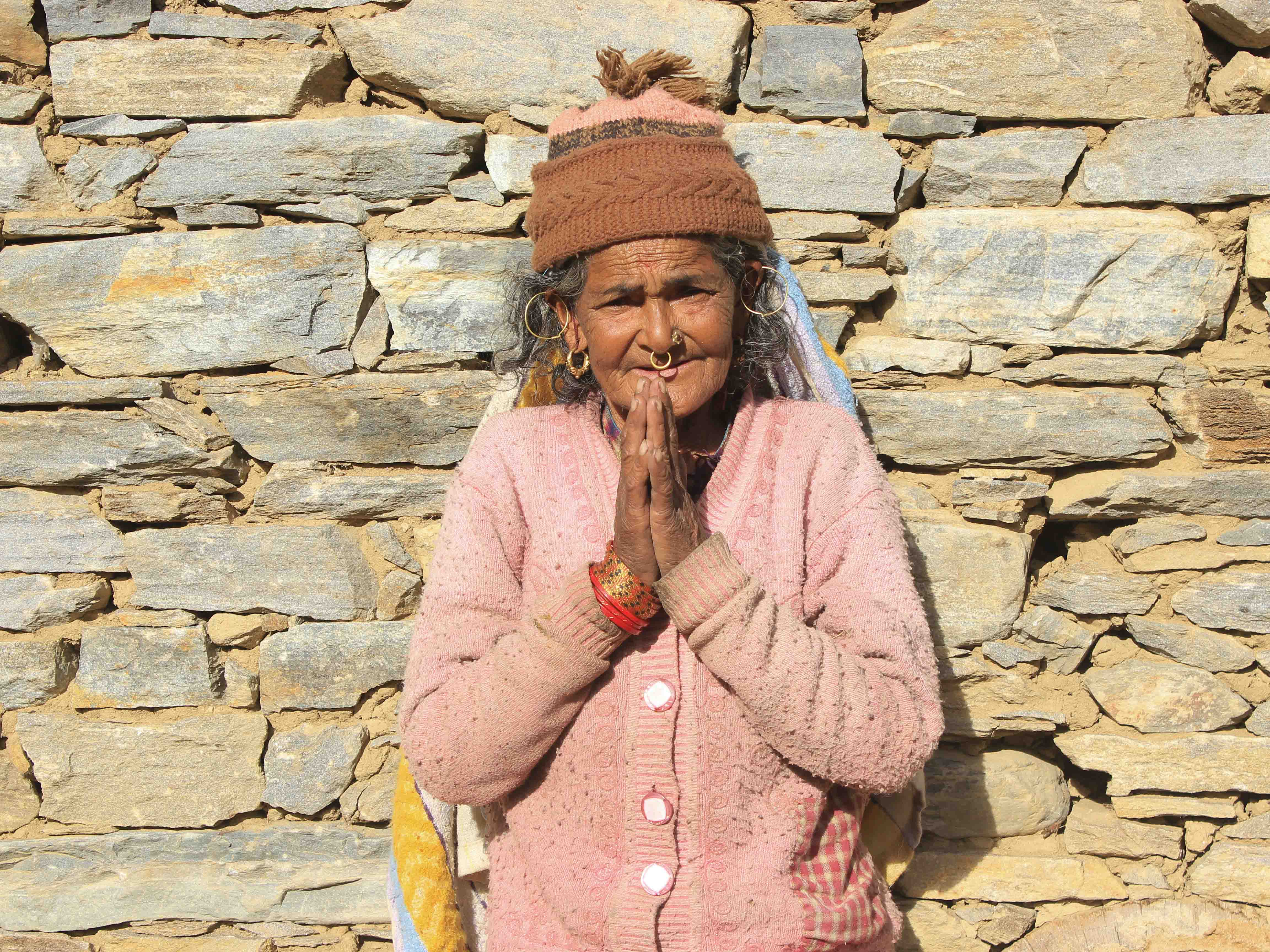
Day 8: Chainpur to Dhangadhi
We take a bus ride back to Dhangadhi which is going to take 12-13 hours.
Day 9: Dhangadhi to Kathmandu
Rama and Roshan (9 days)
Rama and Roshana is the two wet-land that have been complimenting each other for a long time. Geographically this place lies in Achham district and is highlighted for its 12 lakes and 18 patches of grassland. On the northern end of this grassland, local people are seen to harvest honey from high cliffs. Historically, this place relates itself to the myths of Lord Rama and hoards of hindu deities visiting this region for spiritual purposes.
For more information, please check out this site:
http://farwestnepal.org/our-packages/rama-and-roshan/
A basic day-to-day itinerary is given below:
Day 1: Kathmandu to Dhangadhi
We book a bus from New Bus park in Gongabu which will cost around Rs.1000 – 1500. This price is dependant on the present context of situation in country. Discounts are available if you can show a valid student ID card. It will take around 16-18 hours to reach Dhangadhi, so sit tight.
Day 2: Dhangadhi to Sanfe Bagar
We’ll board on a bus from Atariya Bus Park to Sanfe Bagar. On the way, we will pass through Dadeldhura which is famously bestowed with the title of “Queen of Hills”. If you have long enough time then you can even visit the Ugratara temple in Dadeldhura district. After a nine hour drive, we’ll reach Sanfe bagar.
Day 3: Sanfe Bagar – Muja Bagar
After a short drive up to Jughada, we start our trek. The first village that appears is Mujaba,which is conceived as a medieval time village taking us a couple of centuries back. On down the road we will cross a river where one can take a cool swim. After a nice 5 – 6 hours, we will reach Muja Bagar where we stay overnight.
Day 4: Maja Bagar to Rama
Today we will reach the village of Rama which lies among the famous wetlands. On the way we pass through green paddy fields and villages. You can ask the villagers for their bowl of churned yougurt which will blow your mind. At the end of the day we will reach Rama where you have the choice of either camping or arranging a bed in the houses of some local people. To reach Rama it will take about 5 – 6 hours.
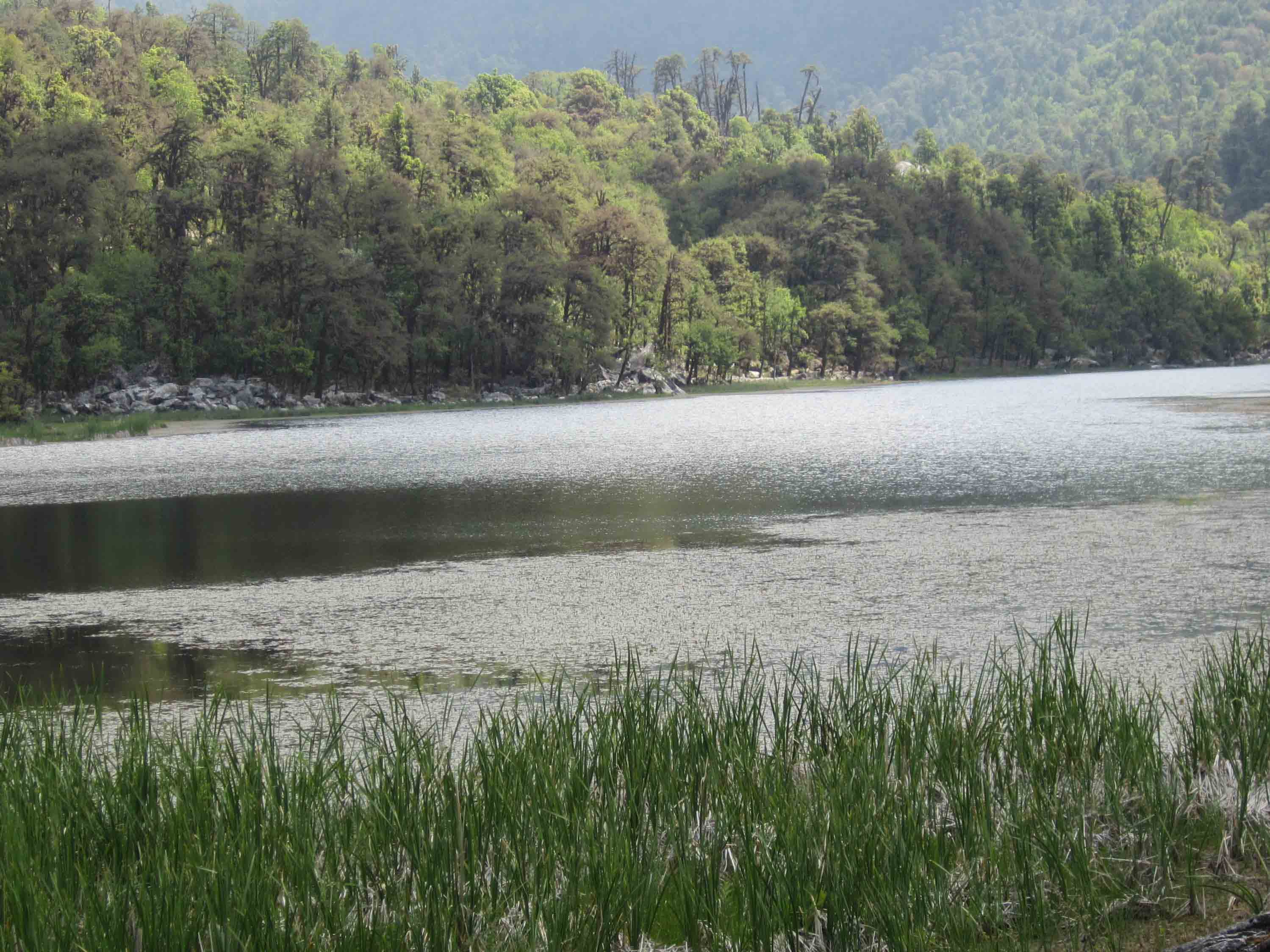
Day 5: Rama to Tinimini
Next morning, we start early so that we can spend as much time on the way. After about 2 hours of walk from Rama, the open-grasslands begin to appear in our view. Nothing more can captivate our mind anymore as we walk on through this trail between lakes and green pastures. After about 3 hours, we will reach Tinimini which is our destination for the day. You will need to camp here as not much lodge run their facilities here. Available time after we reach can be used to explore the surrounding environment. Tinimini is famous for its potatoes so, readers don’t miss out on that.
Day 6: Tinimini – Maja Bagar
While returning, it’ better to directly descend up to Maja bagar. Maja Bagar is about 5 – 6 hours away from the whole Ramaroshan wet-land area. You should take a good rest in Maja Bagar for the night.
Day 7: Maja Bagar to Sanfe Bagar
The return journey today will be about 5 hours. You will have to stay at Sanfe Bagar for the night because by the time you reach this place all the transport will have already headed for Dhangadhi.
Day 8: Sanfe Bagar to Dhangadhi
Today will be a bus ride to Dhangadhi.
Day 9: Dhangadhi to Kathmandu
Api Base Camp Trail ( 13 days)
Api Base Camp trail is one of those trails that has been lost in its own splendor far away from the reaches of many people. This trail in Far-Western Nepal passes through Mahakali valley, steep gorges, waterfalls, forests and high alpine pasture lands until we reach Mt.Api (7132m) Base Camp, the highest mountain of Far-Western Nepal. We’ll also get the chance to see the Chameliya river whose source starts from somewhere around Mt. Api.
[Mt. Api]
For more information you can check out the link below:
A day to day itinerary is given below:
Day 1: Kathmandu – Dhangadhi
We take a bus from Kathmandu from New Bus Park in Gongabu. From here we book a ticket for Dhangadhi which will cost around Rs. 1000 – 1400. Prices fluctuate under conditions such as political instability and season of travel. Discounts are available if you can show a valid student ID card. After arriving in Dhangadhi, which is about 16-18 hours away from the capital, one can explore the lively city or if on a flexible schedule then even explore the Jakhor Lake.
Day 2: Dhangadhi – Gokuleshwar
Next day we take a bus ride from Atariya Bus Stand to Gokuleshwor. The bus passes through Dadeldhura (3 – 4 hours) on the way which is famously known as the queen of hills. Winding through the road with amazing views of Chameliya valley, we reach Gokuleshwar where we rest for the night.
Day 3: Gokuleshwar – Paribagar (1170m)
Today we will start the walking part of our trek after 2 hours of drive to a place called Latinath (1004m). On the road we pass by the biggest hydropower station in Far-West while following the Chamelia River. Getting off at Latinath we travel lightly for about an hour to reach Paribagar which is the destination for the night.
Day 4: Paribagar (1170m) to Makarigaad (1470m)
Trail to Makarigaad is going to take us through awe-inspiring views of traditional villages, agricultural terraces and stone-roofed houses which are genuine parts of Far-Western Nepal. Mid-way (after about 2.5 hours) there is a tea-house which should not be missed as it is where we will be having lunch. The rest of the trail is walking through forested area in midst of trees like Fir, Hemlock, oak and Rhododendron. Finally, after about 5 hours of trek, we reach Makarigaad which is a small settlement. There is a large fortress here that has been in ruins since ancient times.
Day 5: Makarigaad (1470m) to Siti (2258 m)
Siti is about 8 hours away for an average trekker so we should start as early as possible. We take a steep climb up through the gorge until we reach the village of Pato (2198 m). This is where we rest and revive our spirit with a good lunch. Looking at the long road ahead, we fasten our belt and start up-hill until the last ridge after which it’s a gentle walk down to Siti.
Day 6: Siti (2258 m) to Domal (2950 m)
We start today with a downhill until the village of Khayekot (2036 m) which marks the end of sleeping in comfort of lodges or tea-houses. After a good portion of lunch in our belly at Khayekot, we walk on further down the line towards Domal. Domal is revered as holy site where the two great rivers of Chameliya and Rokap meet each other for the first time. Here, we set up our tent and lie down looking at the ceiling full of stars. An average takes around 7 hours to end their day here.
Day 7: Domal (2950m) to Dhaulo Odar (3548 m)
After fastening up our backpacks next morning, we start the day with a steep climb until we see forests and open pastures. Dhaulo Odar or Lower Api Base Camp is an open grassland with rhododendron forests on the foreground and high mountains to feast your eyes upon on the background. “Odar” in Nepali language means “Cave” which are also found in this area. It is going to take between 5-6 hours to reach the lower camp.
Day 8: Dhaulo Odar (3548 m) to Api Base Camp/ Pilkandah (3861m)
It takes 2.5 hours to climb from low camp to high camp. Api Base Camp is filled with open space completely surrounded by mountain peaks. One can have their food blessed by Mt.Api on the north side while Mt. Nampa (6929 m) and Mt. Bobaye (6808 m) towards east. We can further explore the source of Chameliya river on the outskirts of Mt. Api which you have been following since Gokuleshwor. For over-night stay we will return back to Lower camp.
Day 9: Lower Api Base Camp/ Dhaulo Odar to Siti
The return journey is downhill until we reach Khayekot. You should have your lunch here at Khayekot as there are still more than half way left to cover. From Khayekot we will have to climb a steep hill. It will take a total of around 6 hours to reach Siti.
Day 10: Siti to Makarigaad
Today’s journey will take around 6 hours to complete. On the road people will feel as if they are moving back again into civilization. You will come to the town of Pato where you can have your lunch. It will take around 6 hours to reach Makarigood.
Day 11: Makarigaad to Gokeshwar
The hike today is a small one as compared to the days that went by. You will reach Latinath in about 4 hours. From Latinath, you should take a bus to Gokuleshwar which is estimated to take around 2 hours.
Day 12: Gokuleshwar to Dhangadhi
Drive to Dhangadhi is a long one and the day is spent sitting on a chair inside a moving vehicle. But, there are amazing views to catch on the road of hills and mountains. It will take 9 hours to reach Dhangadhi.
[Mt. Api range]
Day 13: Dhangadhi to Kathmandu
You can take a bus back to Dhangadhi or even book a flight.
Khaptad National Park (9 days)
Khaptad National Park has to be one of the most beautiful grasslands in the Far-western Nepal. There is so much of flora, fauna, ecology and scenic beauty here which still remains to be explored. When we ask the local people about this place they tend to say “When i go to Khaptad, i am lost and i want to be lost”. The major attraction of this place is the Tribeni temple, Khaptad Baba ashram and Khaptad Daha.
For more information you can check out the link below:
Itinerary:
Day 1: Kathmandu to Dhangadhi
We book a bus from New Bus park in Gongabu which will cost around Rs.1000 – 1500. This price is dependent on the present context of situation in country. Discounts are available if you can show a valid student ID card. It will take around 16-18 hours to reach Dhangadhi, so sit tight.
Day 2: Dhangadhi to Siligadhi
The final destination for today is a hill city called Siligadhi. Mid-way, you can have lunch at Dadeldhura. At Siligadhi, you can visit the Saileswary temple and get a good rest overnight.
[Jhigrana]
Day 3: Siligadhi to Jhigrana
You will have to walk from here up to a place called Baglekh (4 – 5 hours) where you should have a good lunch. Then, we don’t stop until our feet are resting in the village of Jhigrana about 2 hours away. One can either camp here or opt for homestay.
[Jhigrana]
Day 4: Jhigrana (2250m) to Bichpani (3103m)
The trail to Bichpani is pretty much steep. It is better to rest and go inorder to maintain your pace. You should carry plenty of water and food on this road as there are next for zero tea-houses operating here. The trail is densely forested area constituting of Fir, Hemlock, Oak and Rhododendron. There are plenty of birds to be seen on this trail which is an added benefit if you are a bird enthusiast. You should stay at Bichpani and continue the next day on deeper towards Khaptad.
[Bichpani]
Day 5: Bichpani to Khaptad National Park
Today, we will see the true beauty of this region. After crossing Buki Dahi (about 2 hours from Bichpani), plain grasslands will reveal themselves and leave you astounded. After Buki Dahi, one can rest at Sita Paila temple and then at Tribeni temple. There are rivers flowing here where you can go for a refreshing dip if you want. By the end of the day, we reach the official center of the national park which is opposite to an army camp. There is a lodge here that will serve good food and rest run by the locals. Although, in winter season the availability of these lodges is questionable as owners regularly move down the trail if the frequency of travellers is low.
[Tribeni]
Day 6: Around Khaptad National Park
The first place one should look to visit in Khaptad National Park is the Khaptad Daha which is reachable in 1.5 hours from the lodge. Another side trips is to Khaptad Baba Ashram who is considered to have lived here in 1940’s practicing meditation and exploring herbal medicine of this region.
Day 7: Khaptad National Park (3103m) to Chainpur (1048m)
The return is a long one taking 8 hours of a day. Our mission is to reach the nearest village where transportation has reached. You will pass by villages such as Lokhoda, Meltadi, Tamil and from here it is a 20 minutes ride to Chainpur.
[An old woman from Khaptad]
Day 8: Chainpur to Dhangadhi
We take a bus ride back to Dhangadhi which is going to take 12-13 hours.
Day 9: Dhangadhi to Kathmandu
Rama and Roshan (9 days)
Rama and Roshana is the two wet-land that have been complimenting each other for a long time. Geographically this place lies in Achham district and is highlighted for its 12 lakes and 18 patches of grassland. On the northern end of this grassland, local people are seen to harvest honey from high cliffs. Historically, this place relates itself to the myths of Lord Rama and hoards of hindu deities visiting this region for spiritual purposes.
For more information, please check out this site:
http://farwestnepal.org/our-packages/rama-and-roshan/
A basic day-to-day itinerary is given below:
Day 1: Kathmandu to Dhangadhi
We book a bus from New Bus park in Gongabu which will cost around Rs.1000 – 1500. This price is dependant on the present context of situation in country. Discounts are available if you can show a valid student ID card. It will take around 16-18 hours to reach Dhangadhi, so sit tight.
Day 2: Dhangadhi to Sanfe Bagar
We’ll board on a bus from Atariya Bus Park to Sanfe Bagar. On the way, we will pass through Dadeldhura which is famously bestowed with the title of “Queen of Hills”. If you have long enough time then you can even visit the Ugratara temple in Dadeldhura district. After a nine hour drive, we’ll reach Sanfe bagar.
Day 3: Sanfe Bagar – Muja Bagar
After a short drive up to Jughada, we start our trek. The first village that appears is Mujaba,which is conceived as a medieval time village taking us a couple of centuries back. On down the road we will cross a river where one can take a cool swim. After a nice 5 – 6 hours, we will reach Muja Bagar where we stay overnight.
Day 4: Maja Bagar to Rama
Today we will reach the village of Rama which lies among the famous wetlands. On the way we pass through green paddy fields and villages. You can ask the villagers for their bowl of churned yougurt which will blow your mind. At the end of the day we will reach Rama where you have the choice of either camping or arranging a bed in the houses of some local people. To reach Rama it will take about 5 – 6 hours.
[Lake on the way to Tinitimi]
Day 5: Rama to Tinimini
Next morning, we start early so that we can spend as much time on the way. After about 2 hours of walk from Rama, the open-grasslands begin to appear in our view. Nothing more can captivate our mind anymore as we walk on through this trail between lakes and green pastures. After about 3 hours, we will reach Tinimini which is our destination for the day. You will need to camp here as not much lodge run their facilities here. Available time after we reach can be used to explore the surrounding environment. Tinimini is famous for its potatoes so, readers don’t miss out on that.
Day 6: Tinimini – Maja Bagar
While returning, it’ better to directly descend up to Maja bagar. Maja Bagar is about 5 – 6 hours away from the whole Ramaroshan wet-land area. You should take a good rest in Maja Bagar for the night.
Day 7: Maja Bagar to Sanfe Bagar
The return journey today will be about 5 hours. You will have to stay at Sanfe Bagar for the night because by the time you reach this place all the transport will have already headed for Dhangadhi.
Day 8: Sanfe Bagar to Dhangadhi
Today will be a bus ride to Dhangadhi.
Day 9: Dhangadhi to Kathmandu






